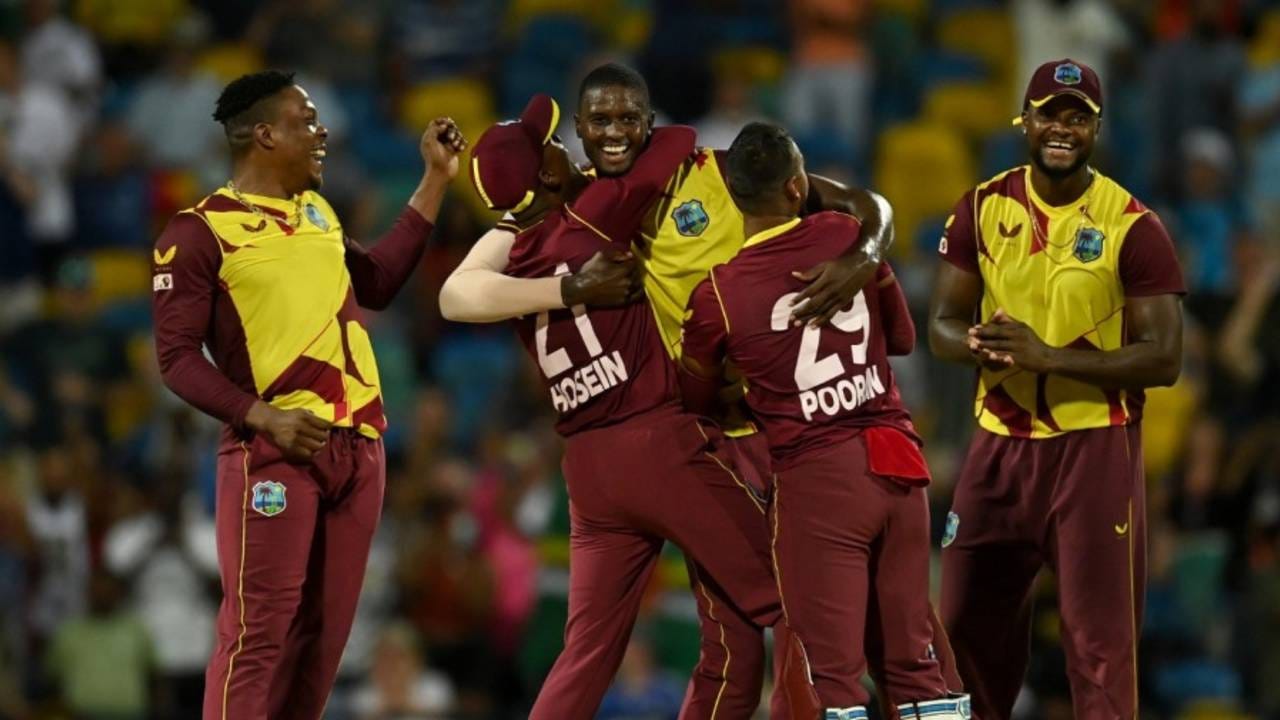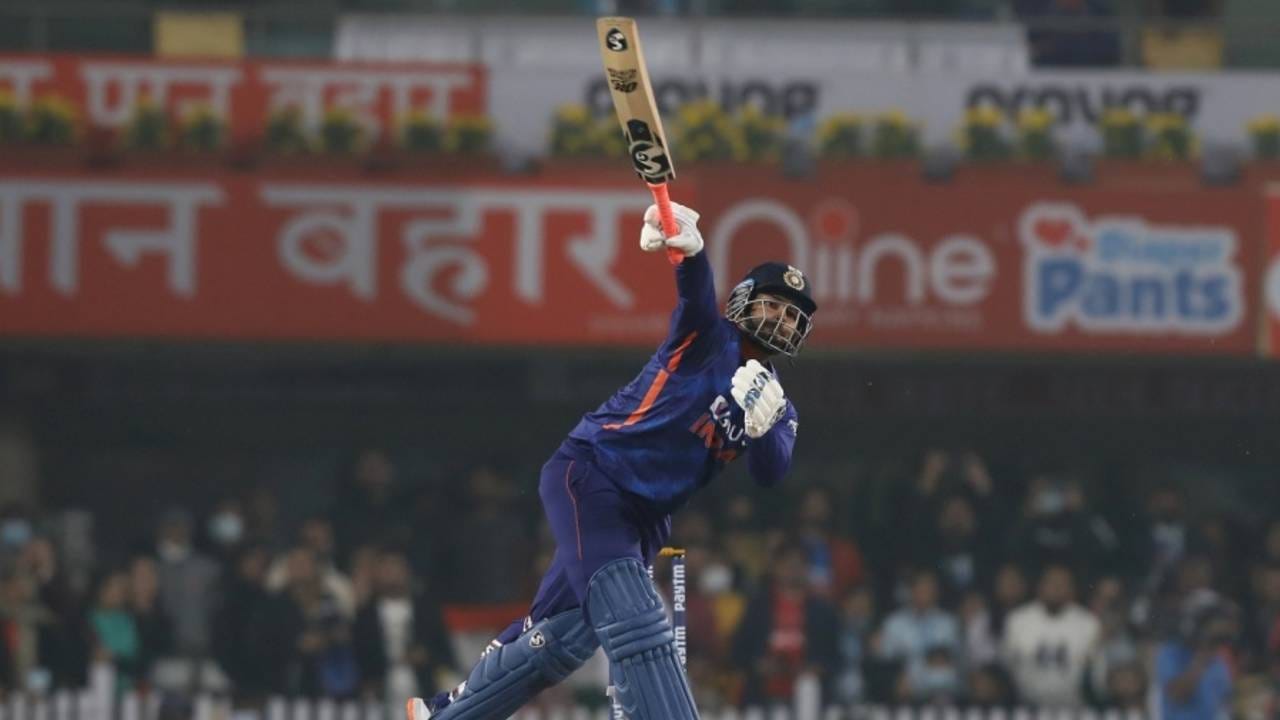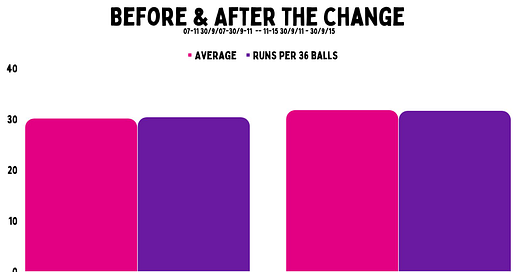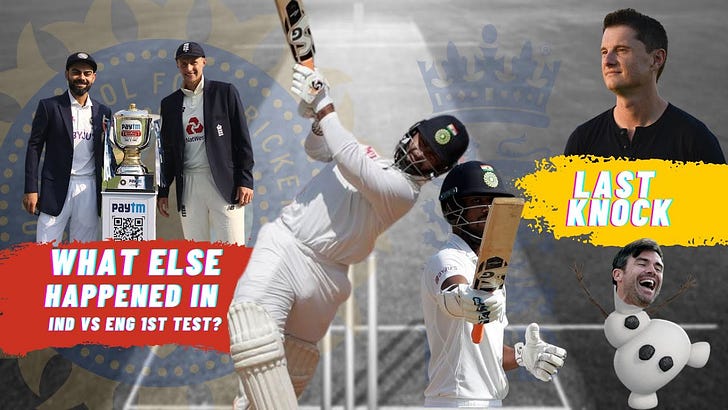
Fun at the death
Latest piece on ESPNcricinfo on how the death of T20 is not like other cricket.
Nicholas Pooran pulls a six, and it is such a powerful hit that it seems to change the recent perception that he is overrated by the T20 hipsters of the world. That is what big hits do. What big moments do. You smash a six to win a game, and people take notice. Sunrisers needed 28 from 18 against Gujarat Titans, and Kane Williamson was out and Rahul Tripathi had limped off. And it was Pooran and Aiden Markram who did the job.
T20, like basketball or netball, is inclined to produce close games; a short-form sport where each team has an equal amount of opportunities to score, and so we get a lot of matches that finish near the end. Plenty of clutch moments, pressure-cooker finishes - all the clichés you hear about.
And so when a player pulls off something like what Pooran did against Titans, it becomes the story for a little while.
But last season Pooran was in another close match, and Markram was his partner again, albeit for a different team. In that game against Rajasthan Royals, Punjab Kings needed ten runs from 15 balls with eight wickets in hand.
It should have been easy, as Chris Morris was bowling for Royals, and he got the yips and started bowling full tosses. He delivered three of them, one which almost bowled Markram as he ducked thinking it was going to hit him. Another one of those shocked Pooran so much that he could only push it for one.
Then they needed eight from 12, and Mustafizur Rahman was bowling to Pooran, and bowled two deliveries from wide of the crease. So wide that the umpires probably should have checked for back-foot no-balls. Instead, Mustafizur got through the over conceding only four runs, and had Markram dropped as well. But it meant Kings needed four from the last over.
Kartik Tyagi came on to bowl this last over. He had done this twice in the IPL before and gone for nine and 27 runs.
Tyagi started with a full toss, Markram found a fielder and there was no run. Next ball, Markram tried to finish it in one hit from a full ball but tanked it to square leg for a single. The next delivery, Pooran tried to run one off the face, which he did successfully, but straight to the wicketkeeper. Deepak Hooda was the new man in, three off three were needed for Kings to win and ESPNcricinfo's win predictor still had them at a 100% chance of winning.
Tyagi bowled a wide, but it wasn't called because Hooda had moved across. Next ball he bowled another, Hooda didn't move across as much, and edged behind. So far in this over there had been one full toss, two potential wides, one wicket and a single.
Now Kings needed three runs from one ball. Tyagi delivered wide - but legally so - as Fabian Allen missed it, and Royals won. Tyagi delivered two wides and a full toss, and yet went for only one run in the over.
If you look at the entire 15-ball stretch, there were four full tosses, three different bowlers, four batters, two balls outside the wide line, two potential back-foot no-balls, seven singles, two wickets and eight dot balls. There was some good bowling in there, but there were more than enough bad balls and wides for Kings to win the game easily.
But sometimes mad things like this happen at the death of a T20 game. It is such a different form of cricket, the most like baseball of any cricket in how close it is to the simpler binary equation of strikes and home runs. Consolidation, keeping wickets in hand, bowling normal lines and lengths - they all go out of the window.
Batters are swinging off their feet, bowlers can bowl four great balls and two average ones, and find their overs going for 14. We call it the death because it is the end of the innings, but it has the kind of finality about it that death does. A good over can be three runs; a bad over, 20. The agony and the ecstasy of this part of the game is really what differentiates T20 from every other form of the game.
There was a tremendous example of this when West Indies took on England for the fifth and deciding T20I in Barbados a few months ago, where Jason Holder took four wickets in four balls in the final over of the series.
Holder was defending 20 runs, and Sam Billings and Chris Jordan were at the crease targeting a short leg-side boundary. Because England were six down, and that many were still needed, West Indies had to be firm favourites.
Jordan has always had all-round talent, but in T20s, he has never really mastered hitting boundaries. And then last year, he went berserk, and started smashing it everywhere. Billings is more of a middle-overs anchor, but he has power. Last year alone he hit 28 sixes, almost one a game. Oh, and he was 40 from 26 at this point. So England had a good outside chance of winning this.
Holder has turned himself into a death bowler in the last three years, and he is very good at taking wickets in this period. Since the start of 2019, he has the fourth-best average in the last four overs for a minimum of 250 balls bowled: 13.29.
First ball, Holder was going at Billings, and it was a wide full toss that Billings mishit to long-on. It was also a no-ball. So Holder delivered a wide, no-ball full toss, but Billings tried to drag it to the short boundary, and this double mistake only cost Holder two runs. Although it did mean that it was now 18 from six. With a free hit to come.
The extra ball was wide and full, and was a fine free-hit delivery, but Jordan left it assuming it would be called wide. It wasn't.
The next ball was another full toss, and again Jordan tried to clear the short side, but mishit the ball, and the catch was taken right on the boundary. But that was okay, as they still had Billings, who would now be on strike.
Holder went for the wide yorker, but missing his length, delivered a half-volley. Billings had already committed to the short leg-side boundary, he hit it straight up and found the leg-side fielder. Holder had missed his length twice but both set batters were gone.
With Adil Rashid facing, Holder tried a slower ball that was miscued to the midwicket fielder again. It was a good length to hit, though the change of pace helped him. A better-set batter could have savaged it.
Holder's final ball was his first really top delivery in this over. He bowled Saqib Mahmood to end the game. West Indies won, Holder was given the Player-of-the-Match award, almost completely for this over. And it wasn't a good over. He wasn't even bowling that well earlier in the match. He had conceded 25 runs from his first two overs, and his only other wicket had been off a half-tracker to Moeen Ali.
Rather, it was Akeal Hosein who had changed the game. He took 4 for 30, destroyed England's middle order, and also had to bowl at the death as a left-arm finger spinner. According to ESPNcricinfo's Impact metric, Hosein was the best player by a distance, and Holder was the eighth-best.
Holder's was a collection of poor balls that were helped by the fact that England needed 20 runs, were fancied with the short boundary, and that a couple of lower-order batters were thrown in afresh.
It is hard to hit boundaries. It is even harder when your team is behind, and you are obsessed by only one boundary. But we remember the wickets as good, and not as per the situation.
Which brings us back to Sunrisers' win over Titans the other night. With 18 balls left, 28 were needed. The first of those balls, from Lockie Ferguson, was a short one to Pooran who mistimed a pull off the toe of his bat. Ferguson had to do a hand-brake turn to get back to where the ball was dropping, but ultimately he shelled it.
The next two balls from Ferguson were down the leg side - one was called a wide, the other flicked away for a free boundary. Next ball, Ferguson went short again and Pooran flick-pulled it for six. After this, Ferguson nailed some yorkers; then Mohammad Shami started with hard lengths to ensure that only singles and a double could be scored.
But when Shami went short to Pooran again, he top-edged over the wicketkeeper's head for a boundary. To finish the over, Markram nailed a four off an attempted yorker from Shami that just missed its mark.
Ferguson went short again to start the last over and Pooran hit it back to Trinidad, and the game was over.
There were more good balls from Ferguson and Shami than Royals delivered in that game last season. They could have dismissed Pooran twice, and Markram struggled right until he got one off the middle.
The same two batters who couldn't manage ten from 15 with a bunch of full tosses and wides last year, needed only 13 balls to get 28 off much higher quality bowling.
We look for clutch and pressure performances, and overlook that both teams are often going so hard, mad things will happen. Average batting - or very lucky bowling - can win you a game sometimes. The death is a scramble. It is often messy. Bad balls win games, good shots get caught, and so much is going on that we are just trying to process the results, and often forget about the process.
It is really hard to bowl a delivery that can't be hit for a four or a six. It is not easy to try and hit a six every ball. These are high-risk acts. Most six-attempts aren't sixes; they are mishits or just misses.
When you see this much drama, do you really want to check that the story was told correctly? Or do you want to scream at Pooran's six, Holder's four in four, or Tyagi's record-breaking over?
Because when you take a forensic look at the death overs of a T20 game, what you often find is utter carnage. And fun times.











